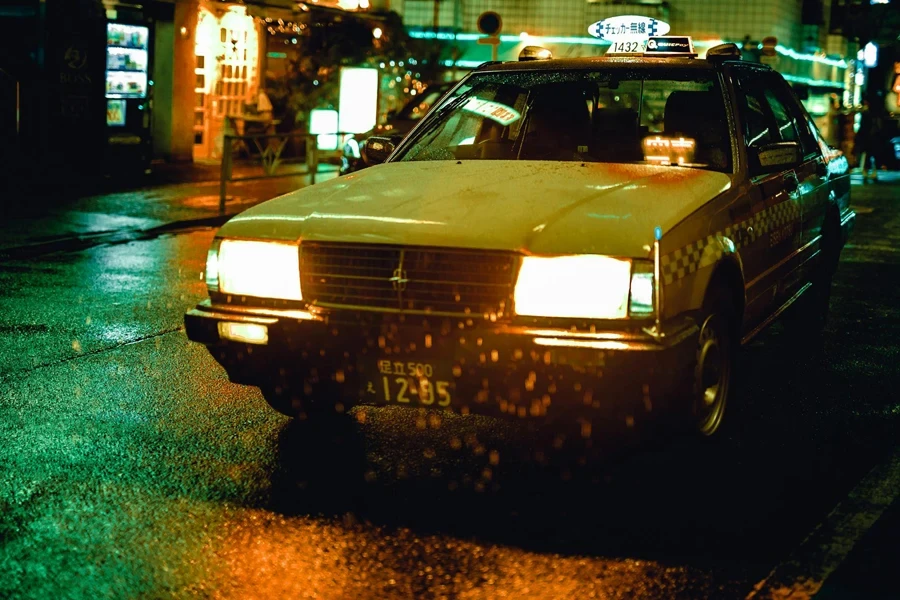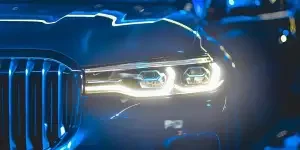Table of Contents
● Introduction
● Market overview
● Halogen vs LED fog lights: A comprehensive comparison
● Key considerations when selecting fog lights
● Conclusion
Introduction
LED fog lights are transforming vehicle safety and visibility in adverse weather conditions, offering superior brightness and energy efficiency compared to traditional halogen lights. The market for LED fog lights is experiencing significant growth, driven by increasing automotive production and stringent safety regulations. This article explores the current market trends, provides an in-depth comparison between LED and halogen fog lights, and highlights key factors to consider when selecting fog lights. By focusing on these aspects, businesses can make informed decisions to enhance vehicle performance and safety. Discover the benefits and critical considerations for choosing the best fog lights for various applications.
Market overview

Market scale and growth
The global LED fog light market was valued at USD 910.2 million in 2022 and is projected to reach USD 3.51 billion by 2031, growing at a compound annual growth rate (CAGR) of 16.2% from 2024 to 2031. This rapid growth is driven by increasing demand for advanced automotive lighting solutions, heightened focus on vehicle safety, and technological advancements in LED lighting. The market’s expansion is also supported by stringent government regulations mandating improved vehicle safety features.
Regional insights
Regionally, the Asia Pacific region is the fastest-growing market for LED fog lights, driven by the robust increase in automotive production, rising disposable incomes, and the growing popularity of adventurous driving. The Asia Pacific region’s automotive production saw a notable increase, with China producing over 25 million vehicles in 2023 alone. In contrast, North America remains a dominant market due to frequent foggy conditions necessitating the use of fog lights and the presence of major automotive manufacturers.
Halogen vs LED fog lights: A comprehensive comparison

Brightness
LED fog lights offer significantly higher brightness than halogen lights, enhancing visibility in foggy conditions. Lumens, a measure of light output, are considerably higher in LED lights compared to halogen lights. For example, some high-end LED fog light conversion kits provide up to 10,000 lumens, whereas standard halogen bulbs typically produce around 1,000 to 1,500 lumens. This increased brightness allows drivers to see the road more clearly and react to obstacles more quickly, especially in dense fog.
Energy efficiency and longevity
LED fog lights consume significantly less power than halogen lights, often using only 15-20 watts compared to 55-70 watts for halogens. This reduced energy consumption not only saves power but also reduces the strain on the vehicle’s electrical system. LEDs typically last between 10,000 to 50,000 hours, outlasting halogen bulbs, which usually last around 1,000 to 2,000 hours. The longer lifespan of LEDs results from their solid-state construction, which is more resilient to heat and electrical fluctuations compared to the filament-based design of halogen bulbs.
Durability
LEDs are more resistant to vibrations and impacts, making them suitable for rough terrain and adverse weather conditions. Unlike halogen bulbs, which contain a fragile tungsten filament, LEDs use a semiconductor diode that emits light when current flows through it. This design eliminates the risk of filament breakage, a common issue with halogens. Many LED fog lights are constructed with materials such as aviation-grade aluminum for the housing, which enhances heat dissipation and prevents thermal degradation. Additionally, LEDs often incorporate integrated cooling mechanisms like heat sinks or fans to manage heat efficiently and maintain optimal operating temperatures.
Installation and compatibility
LED fog lights are generally easy to install and compatible with most vehicle models, though some size considerations are necessary due to the larger heat sinks or cooling fans that LEDs may require. The installation process typically involves replacing the old halogen bulb with a new LED bulb, which can be done with minimal tools and expertise. However, LED fog lights are not compatible with factory HID/Xenon setups due to different ballast requirements. It’s important to verify the bulb size and compatibility with the vehicle’s headlight housing and electrical system before purchasing. Modern LED kits often come with plug-and-play connectors, making installation straightforward.
Cost
While LED fog lights have a higher initial cost compared to halogen lights, they offer long-term savings due to their energy efficiency and reduced replacement frequency. The upfront investment in LED fog lights is offset by the lower operational costs and extended lifespan, making LEDs a cost-effective choice for both manufacturers and consumers. Additionally, the reduced maintenance and enhanced durability of LEDs further contribute to their cost-effectiveness, particularly for vehicles used in demanding conditions.
Key considerations when selecting fog lights

Beam pattern
Choosing the correct beam pattern is essential for maximizing visibility in foggy conditions. LED fog lights typically feature a cut-off beam pattern that prevents light from scattering and reflecting off the fog, which can impair visibility. This pattern directs light onto the road surface and the road’s edges, illuminating potential hazards while minimizing glare for oncoming traffic. Look for fog lights with a defined horizontal cut-off and wide beam spread to ensure optimal road coverage.
Color temperature
The color temperature of fog lights affects their performance in various weather conditions. Most LED fog lights operate around 3,000 Kelvins, emitting a warm yellow or amber light. This color temperature is effective at reducing glare and enhancing contrast in fog, rain, and snow. Some advanced LED fog lights offer adjustable color temperatures, allowing drivers to switch between warm yellow for foggy conditions and cooler white for general use. This adaptability can be particularly useful for drivers who encounter varying weather conditions.
Durability
Durability is a critical factor for fog lights, especially for off-road and heavy-duty applications. High-quality LED fog lights are often constructed with die-cast aluminum housings, which provide good heat dissipation and resistance to corrosion. Look for lights with an IP67 or IP68 rating, indicating they are dust-tight and waterproof, capable of withstanding immersion in water up to a certain depth. Additionally, features like impact-resistant polycarbonate lenses and reinforced mounting brackets can enhance the durability and lifespan of fog lights in harsh environments.
Energy efficiency
LED fog lights are renowned for their energy efficiency, typically consuming 70-80% less power than traditional lighting solutions. This efficiency is achieved through advanced semiconductor technology that converts electrical energy into light with minimal heat production. For example, a 20-watt LED fog light can produce the same luminous output as a 100-watt incandescent bulb. This lower power consumption reduces the load on the vehicle’s electrical system, potentially prolonging battery life and improving overall fuel efficiency.
Compatibility
Ensuring compatibility with the vehicle’s specifications is crucial when selecting fog lights. Modern LED fog lights are designed to be plug-and-play, making them easy to install with minimal modifications. It’s important to check the fog light’s dimensions and mounting specifications to ensure they fit within the existing housing. Some LED fog lights also come with CAN bus compatibility to prevent dashboard error messages and flickering issues on vehicles with advanced electrical systems. Additionally, consider whether the fog lights are compatible with a vehicle’s voltage system, typically 12V or 24V, to avoid electrical issues.
Conclusion

LED fog lights are a good investment for enhancing vehicle safety and visibility in adverse weather conditions. Their superior brightness, energy efficiency, and durability provide a significant advantage over traditional lighting options. When selecting fog lights, it is essential to consider factors such as beam pattern, color temperature, durability, and compatibility to ensure optimal performance and longevity. By choosing good quality LED fog lights, businesses can ensure their vehicles are better equipped to handle foggy and challenging driving conditions.



